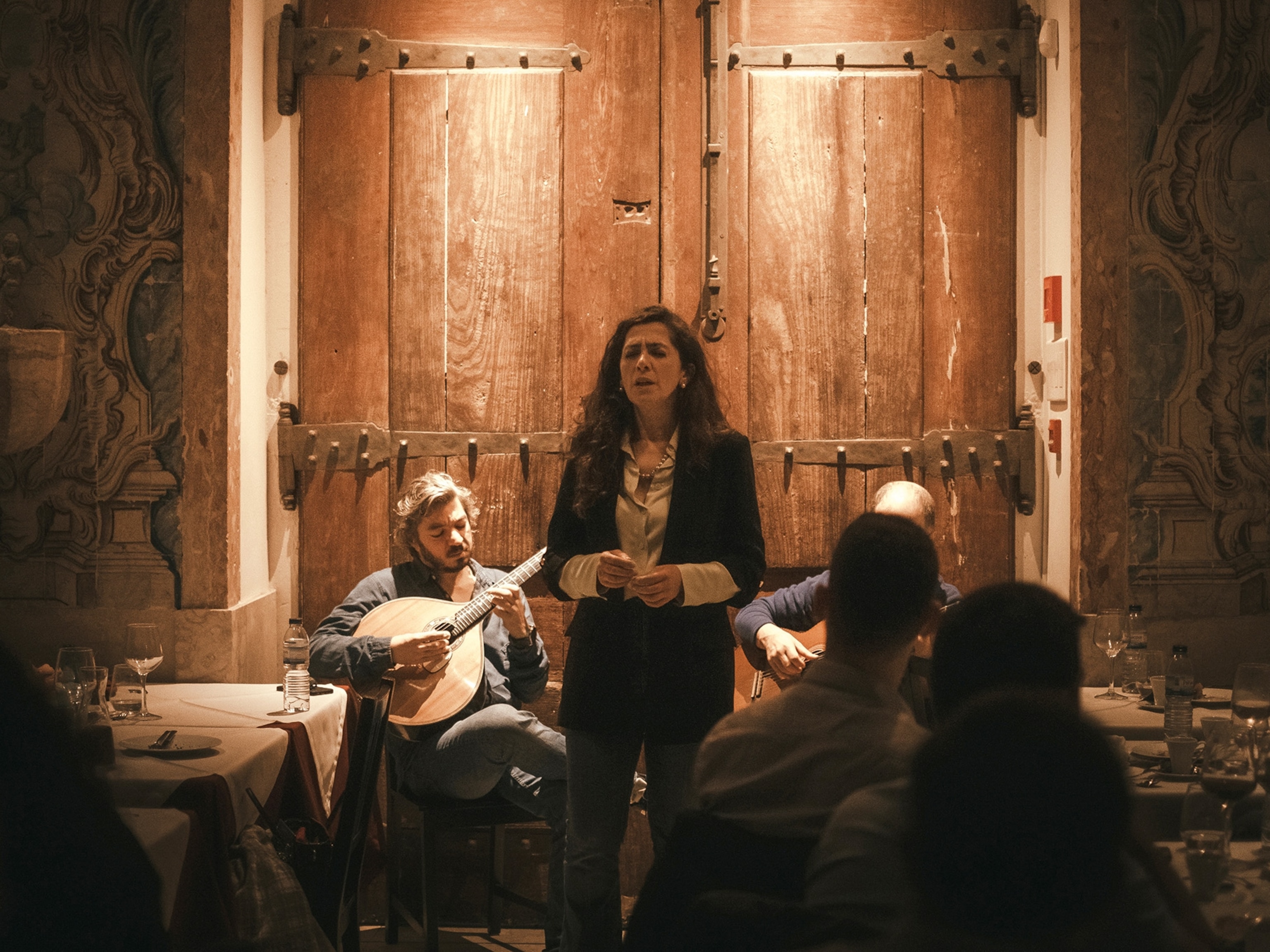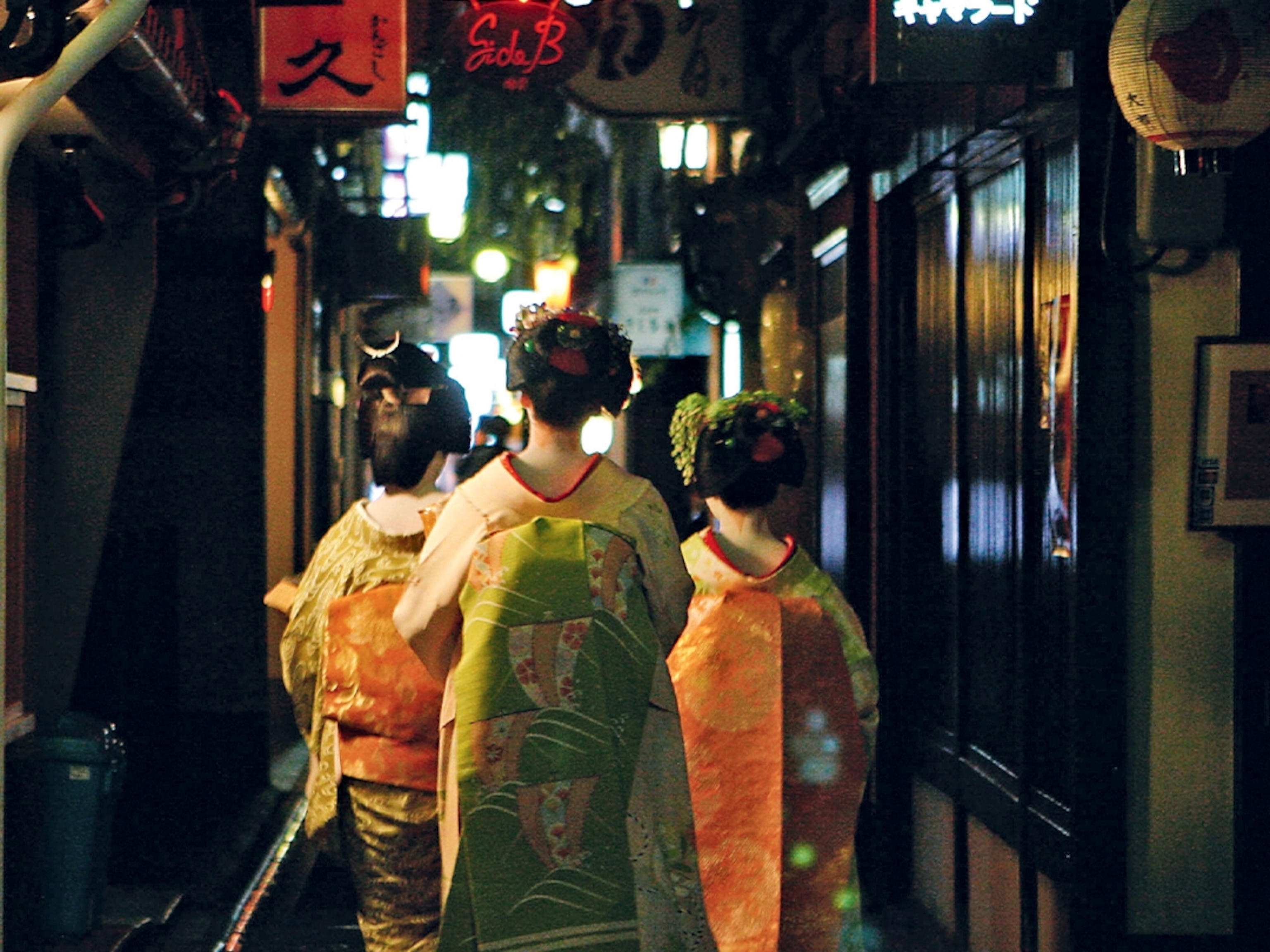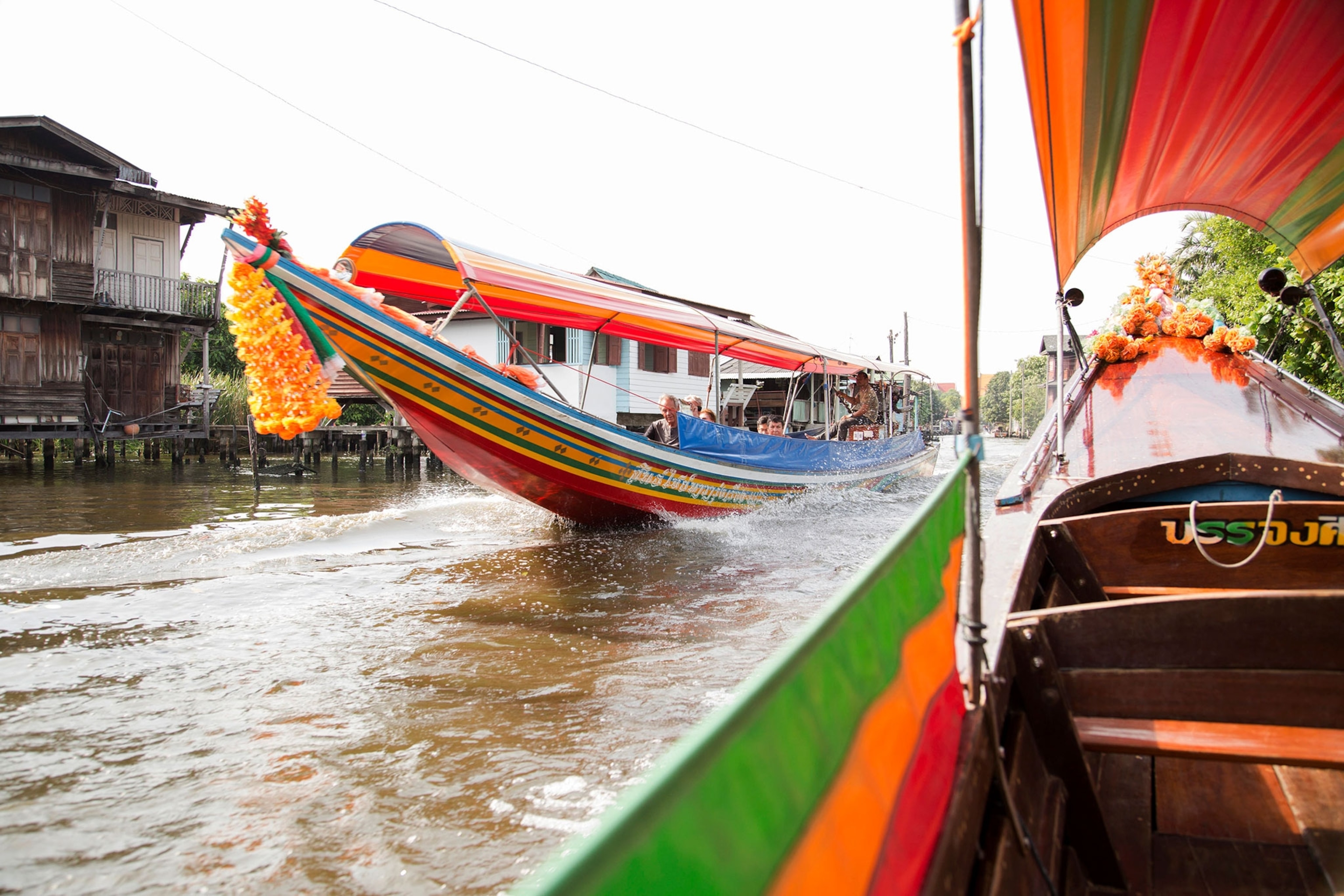
How to See the Endangered Heart of Bangkok
Four places to visit in Bangkok while you still can.
If you’re traveling to Thailand’s City of Angels, you’re likely already planning to snack on street food, peruse the souvenir stalls and bars of infamous Khao San Road, and admire the ornate architecture at the Grand Palace. But if you want to experience the beating heart of this spirited city, you’ll need to dig a little deeper and wander a little further from the touristic sites into the alleyways of neighboring historic communities—before it’s too late.
“We are losing the heart and soul of Bangkok,” warns Michael Biedassek, a Thai-German Bangkokian and the founder of ethical travel company Bangkok Vanguards.
Some of Bangkok’s oldest and most culturally rich communities and traditions are currently under threat, as new development projects move in and push older, historic communities out. Even the very street stalls that put the metropolis on the map are at risk of disappearing, with the government announcing a ban on street vendors in an effort to “clean up” the capital.
“The people, food, traditions, architecture, and the way of life tell you a lot about the DNA of a place,” Biedassek explains. “If everything is developed into large corporations, then you lose the character of the place and everything is replaceable—you can find the same corporations in other cities around the world. And if Bangkok’s DNA is wiped out, what are we left with? It will just be a copy of other international cities.”
Biedassek and his team are working to protect the DNA of their beloved Bangkok by offering locally guided, community-based tours through historically significant areas around the city. These educational explorations not only provide an unparalleled experience to travelers, they build a bridge between visitors and locals, create a deeper connection to the city, bring in tourism money, and highlight these endangered communities' cultural and historic value.
As travelers, we may feel powerless—even partially responsible—in the face of the development of popular destinations. Although we may not always have the opportunity to speak directly to local policymakers, we do have choices about where we spend our time and money. And we can let our dollars do the talking.
Here are four places to visit in Bangkok—while you still can.
Charoen Chai
Located in one of the world’s largest Chinatowns, this community has a long history—dating back to the 1700s—of contributing to Bangkok’s economy and gastronomy. Wander the colorful streets, shops, and temples of Charoen Chai for a chance to admire the historic architecture and witness spiritual Chinese rituals as well as traditional culture in commerce.
While the street scene of Charoen Chai (Charoenkrung Road Soi 23) is a living museum in and of itself, the community also opened their own museum and community center to showcase the value of their neighborhood and culture, and share it with visitors. A trip to the museum affords travelers a chance to better understand Charoen Chai while also contributing to the local economy.
You don’t have to go it alone; Biedassek and his Bangkok Vanguards team offer personalized, in-depth walking tours through the neighborhood. Suitably—yet sadly—named Bye Bye Chinatown, these guided tours bring visitors closer to the culture, cuisine, and residents of this important heritage neighborhood.
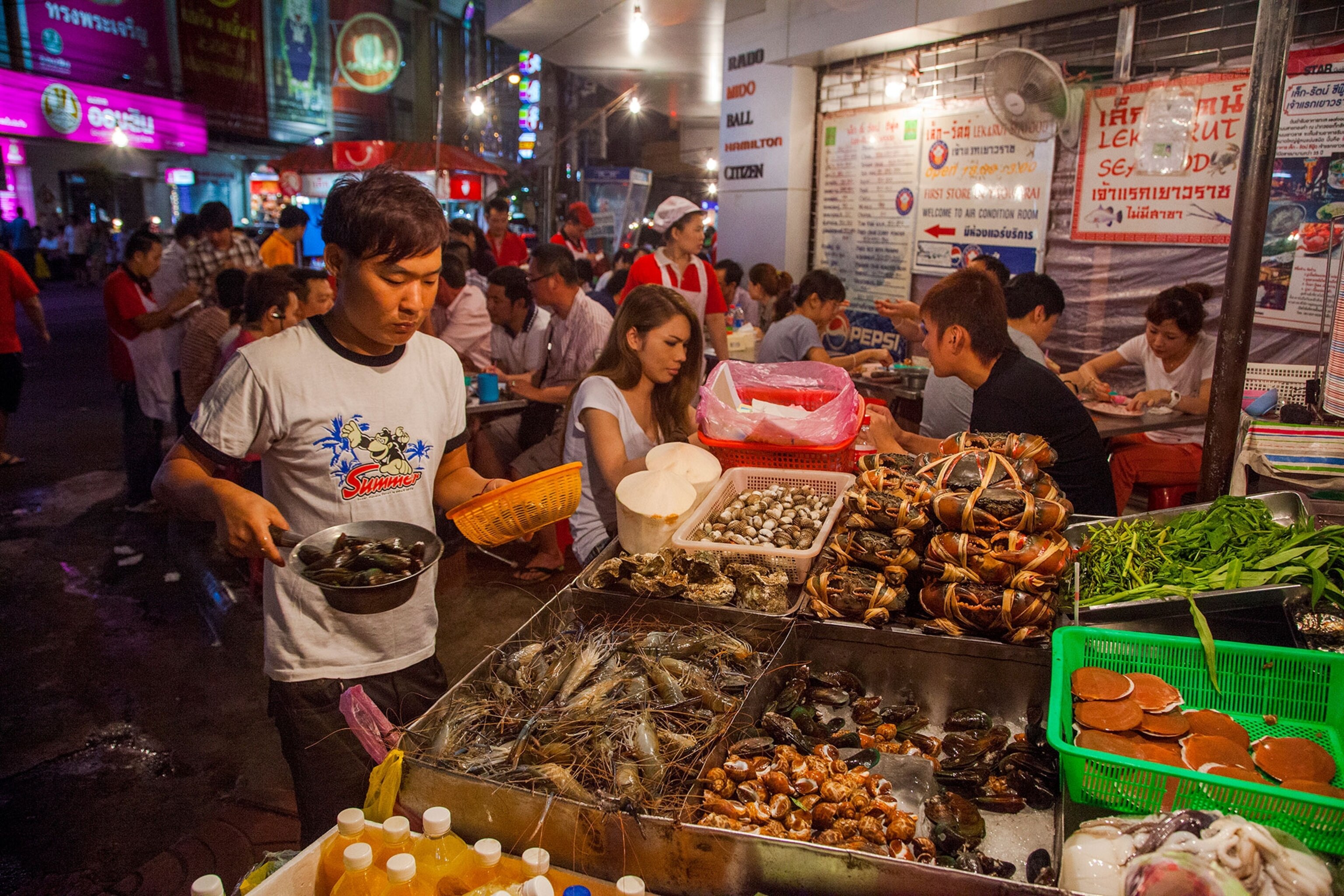
Nang Loeng
Known as a culinary oasis in the heart of Bangkok for over 200 years, Nang Loeng is much more than a market. It’s a community composed of a medley of Asian cultures, flavors, scents, and sounds that entice local and international gastronomy lovers alike.
What began as a fresh produce market in 1900 has transformed into a lively food court, lined with restaurants and vendors preparing recipes passed down through generations. With the construction of a new subway line (the MRT Orange Line), further development of the area could likely follow. Don’t miss the chance to sample some of the best curries and kanom (desserts) Bangkok has to offer. Head over to Democracy Monument, where you can walk five to 10 minutes or catch a cab to Nang Loeng from there.
Street stalls
In April 2017, the Bangkok Metropolitan Administration (BMA) announced a ban on street food and declared it would clear street vendors off the city’s sidewalks by the end of 2017. They've already made good on that promise in the central shopping areas around Siam Square and Pratunam.
The governor has said he will spare Yaowarat and Khao San Road for the time being, and the city has not yet been completely cleansed of street stalls. It’s unclear what the street food ban will mean for the future of the many street vendors that feed not only locals but the economy and tourism industry as well. Be sure to get your fill of street foods while you still can—some of the tastiest street treats are available at Yaowarat Road and Wang Lang Market.
Canal communities
Bangkok’s klongs (canals) were once transportation and trading routes teeming with activity. Over the years, the majority of them have been filled in to quite literally pave the way for development. While some of the communities along the few remaining klongs are intact, others—particularly along the Chao Phraya River—have been targeted for development.
And some, like Pom Mahakan, have already fallen victim. Until recently, this heritage community tucked away in an unassuming neighborhood between the Ong Ang Canal and the old city wall was home to one of the last remaining clusters of teakwood houses in the city. It was an unofficial living museum—an extant tribute to Bangkok’s past, abuzz with local life and culture. Now, city officials are razing the irreplaceable historic homes to make way for a park intended to attract tourists, effectively demolishing the very architecture and essence of local life that has long drawn visitors to this neighborhood.
The battle over this contended community started in the 1990s when the BMA began making moves to reclaim the land. At that time, some residents agreed to sell their homes, which were subsequently demolished, while others resisted and were consequently handed eviction notices. Until May 2018, the few remaining resolute residents held their ground, proposing a compromise: to create a small park and conserve the homes and community as a living heritage museum to be managed by the inhabitants themselves who were eager to share their way of life with visitors—rather than abandon their homes and have their lives reduced to a few words etched into cement slabs.
- National Geographic Expeditions
Ultimately, the BMA won out, stripping Bangkok of a significant piece of its heritage and leaving Pom Mahakan residents devastated and homeless.

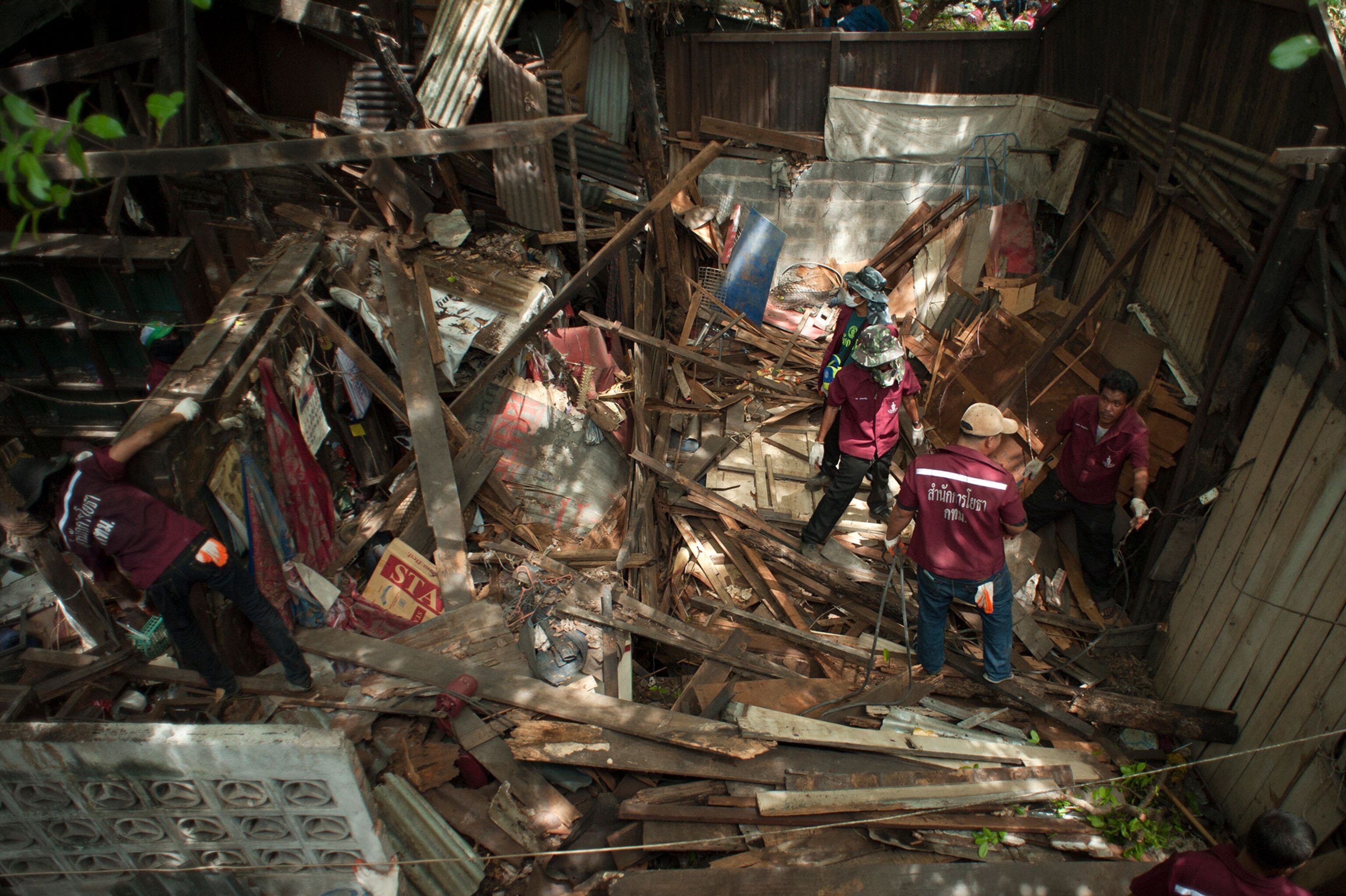
“I was invited to the final dinner with the community before their houses were to be demolished,” Biedassek shares. “The despair was overwhelming. The government didn’t keep the promise to preserve these architecturally unique and historically significant buildings—the last of their kind in the city. This authentic history, a living link to the very beginnings of Bangkok, has been completely erased from the map.”
Biedassek and other locals wonder if any place is safe from destruction.
“I’ve seen development plans for my neighborhood [along the canals],” Biedassek says. “it looks as if they have plans to build a street or promenade all the way out to the old city wall. If they pick up these plans, they may very well move on to developing the edges of the promenade—which could directly affect the community I live in.”
One of the ways Biedassek believes he can fight back is to demonstrate the value of these heritage communities and continue introducing visitors to the DNA of Bangkok, the local people, the deep history, and the way of life that this city was built upon. In an effort to allow travelers to immerse themselves in canal life before it’s gone, he recently opened Innspire—an old artist home in a klong community that he and his team transformed into a guesthouse.
Biedassek and the Bangkok Vanguards team continue to lead historic, culinary, and cultural tours through some of the canal communities and the surrounding historic core of the city. They weave their way through back alleys, stopping by street stalls to purchase snacks from local vendors, cruising the canal, chatting with residents, and even eating a meal in a local home. Through this experience visitors have an unprecedented opportunity to see the soul of this ever-changing capital through the eyes of a conscientious local—before it’s too late.
Sunny Fitzgerald is a freelance writer, sustainable travel specialist, Lonely Planet Local, and a regular contributor to Kama`aina Magazine. You can follow her on Instagram @froliq and her website.




